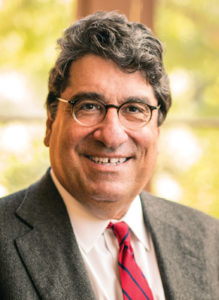 Nearly 20 years ago, new imaging and digital technologies allowed researchers an unprecedented look into the deepest workings of the human brain. Vanderbilt saw the potential of this revolutionary field and invested in a brain institute specifically designed to foster research collaboration from any part of campus, whether in medicine, engineering, the basic sciences, law, business or the humanities.
Nearly 20 years ago, new imaging and digital technologies allowed researchers an unprecedented look into the deepest workings of the human brain. Vanderbilt saw the potential of this revolutionary field and invested in a brain institute specifically designed to foster research collaboration from any part of campus, whether in medicine, engineering, the basic sciences, law, business or the humanities.
Today the Vanderbilt Brain Institute proudly occupies its place as a global leader in neuroscience, fueling breakthroughs and innovations that get to the very heart of the university’s mission and training the next generation of research leaders in this dynamic area.

During the past several years, Vanderbilt faculty and administrators similarly have witnessed how data-science applications like artificial intelligence and machine learning have opened novel pathways of discovery in a wide array of disciplines. As with the Brain Institute 20 years ago, Vanderbilt is investing boldly in the exciting new area of data science. You’ll read that we are launching the Vanderbilt Data Science Institute this fall and are developing a master’s degree program in the subject that will admit students beginning in 2019.
What makes both these fields ideal for Vanderbilt is that they hold a great deal of promise for sparking research partnerships across campus that might not happen otherwise. Why is collaboration so important? I truly believe the advancement of knowledge is best served by a multidimensional perspective. To get an idea of what this means in practice, look at some of this year’s Trans-Institutional Programs (TIPs) award recipients.
One project combines 3-D modeling technology from the School of Engineering with cultural experts in the College of Arts and Science, Divinity School and Blair School of Music to preserve valuable artifacts. Another proposal maps out a research plan not only to understand the biology behind microbial resistance to antibiotics, but also to determine the best ways to educate the public about protecting themselves and loved ones against these so-called superbugs.
This issue’s cover story, also shows the value of taking a multidisciplinary approach to solving problems. Alumni Eduardo Esquenazi, BS’98, and business partner Jake Beverage, BA’98, turned to the vast richness of the ocean (aided by data science) to seek potential life-saving compounds in an area largely unexplored by pharmaceutical researchers. Yet the friendship between Eduardo and Jake began long before they went into business together. They met at a party as Vanderbilt sophomores.
It’s a good reminder that while each of us has unique interests and passions, exponentially more knowledge is to be gained by engaging with and including those around us—particularly when those people view the world through a different lens than your own.
Every single member of our diverse community, from the oldest alumni to the newest admitted students, contributes a vital part to our core mission. We are united by a distinct set of values. That’s why we are a university, not a poly-versity. We stand together. We are one Vanderbilt.
—NICHOLAS S. ZEPPOS, CHANCELLOR